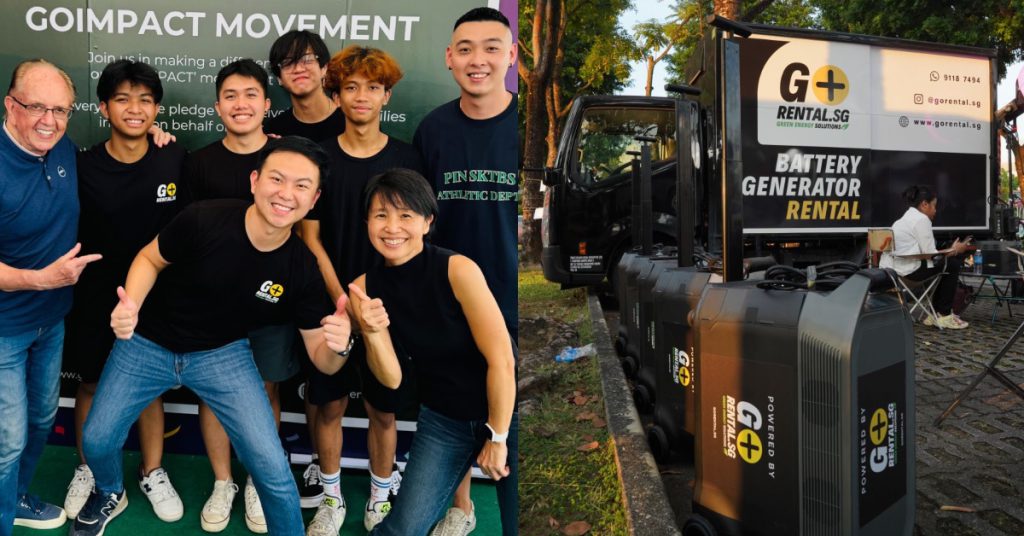The job market is open, and companies are hiring. Looking through the listings, you see a few openings that excite you. You locate the softcopy of your CV or resumé and proceed to draft out a cover letter.
But before you go ahead and submit your application, there are plenty of things to consider before you hit the send button. Considering how competitive the job market can get these days, it’s always worth taking into account how your application will look compared to other candidates.
Below are a few important pointers to note when crafting your next job application, that could lose you your opportunity before you even get a chance at a face-to-face interview.
1. Sending the same job application to everyone.

One particular habit spotted in many of today’s job applications is the tendency for applicants to send the same application email to multiple companies and hope that one of them returns with a positive reply.
However, it becomes an issue when the applicant makes the mistake of sending the same email without using the blind carbon copy function, or BCC for short. This allows the recipient (the hiring manager, usually) to see the entire list of recipients, which often leaves a bit of an unsavoury impression on the hirer. After all, attention to detail is something many companies look out for.
This also makes it look like the applicant doesn’t really care all that much whether he/she gets the gig.
How do you fix this?
If you can, it’s highly recommended that you tailor each application towards each recipient so that your emails will all seem purposeful—something all employers prefer too see.
Go ahead and be as particular as you can about the details; address the recipient and his/her company by name, mention specifics unique to the company and job position, and tell them about why you’re specifically suited to their position.
But if you still choose to go the route of mass-mailing your potential suitors, be sure to craft a cover letter that is comprehensive and that covers the relevant points about the job you’re applying to.
Also, make certain that you use the blind carbon copy (bcc) option when sending to multiple addresses at once. This ensures that recipients will not be able to see who else has received your generic email, and reduce the chances of them getting turned off
2. The wrong tone.

Compared to even as recently as 10 years ago, the general attitude to applying for jobs has shifted away quite significantly from prim and proper corporate lingo to more casual and relaxed language. Today instead of cover letters beginning with sentences like “To whom it may concern”, you’ll see more instances of “Hey there”, and “How’s it going?”.
While it’s arguably become more acceptable to type out an email with a bit more of a personable flair, there’s always the inherent danger of going overboard and making things sound way too friendly and intimate for the objective you’re trying to accomplish, which is to find employment.
How do you fix this?
Go ahead, and write your sentences as friendly as you want, but be sure to also remember that you’re engaging with a prospective boss, and interact as such.
Avoid language that shows endearment and avoid the excessive use of things like abbreviations.
3. Too many errors.

As unfortunate it may be, it’s still common to see plenty of job application entries that are littered with mistakes and errors, ranging from typos, formatting problems, grammatical faux pas, or worse, addressing the wrong recipient or company.
How do you fix this?
Before you send out a job application email, always be sure to proofread your content for all of the above plus everything else that could jeopardise your chances of landing the job. If possible, grab a friend or family member to help you spot for these, and if you have to, pay a proofreader to make sure everything is immaculate before it leaves the outbox (the costs will be worth it if you land the position).
4. Putting in irrelevant info.
No one enjoys reading or hearing about things they don’t care about, so why should it be any different when it comes to job applications? When sending out CVs or resumés, applicants often make the mistake of including way too much information that does not pertain to the job position. Usually, this is done as a result of applicants hoping to impress their potential employees with all the things that they know or are capable of doing.
Sadly, this line of thinking is a misguided one.
It’s unlikely that the hiring manager going through thousands of applications won’t care that you spent a few months completing a soap-making course when the position you applied for reads “Business Analyst”, and neither will he/she care about your affinity for Pokémon trading cards.
How do you fix this?
To keep everything relevant, be sure to sift through your your application and make sure that only the most pertinent details get through. It’s one thing to showcase yourself as an interesting person that would be a great addition to the company—it’s another if potential hirers turn away your application just because they couldn’t be bothered with all the stuff that just doesn’t matter.
In fact, if you are applying for a range of different jobs or industries, it’s recommended that you tailor your resumé by job or industry, to ensure that you have the best chance of attracting a prospective employer’s attention.
5. Not knowing your prospective employer.
Knowing the company you apply to—this one is more of a recommendation than a must-do, but ultimately one that will help job-hunters just as much as all the other pointers here.
Unfortunately, plenty of young job-seekers go about applying to companies without researching them first, and having someone indicate in their emails that they don’t even really understand what the company does, but would still like to apply anyway, is usually a red flag for hiring managers.
How do you fix this?

Seasoned job-hunters will know that taking extra pains to research the company will help them understand the company better and craft a better cover letter that demonstrates to the hirer that they’ve done their research.
While this may not be absolutely necessary, the benefit comes in the form of the advantage you’ll have over others who send in applications that sound and appear generic and uninformed. Plus, it can’t hurt to be extra knowledgeable about things in case you do get called up for a face-to-face interview.
6. Messy CVs and resumés.
These days it’s become incredibly easy for just about anyone to make their resumés and CVs look good, with design tools and templates available all around the web.
Understandably, it’s easy to get carried away when trying to beautify the document that showcases who you are and what you can do. Attempting to add a bit of colour or an unconventional typeface to your CV or resumé can quickly lead to your showcase suddenly looking like a promotional poster for a circus if you’re not exactly sure of what you’re doing.
How do you fix this?
If in doubt, remember that the content comes before everything else, and that simple always trumps complicated when it comes to delivering a message. Keep colour combinations to a maximum of three colours, use no more than two to three different fonts, and always make sure that each section of your document leads easily from one point to the next.
Yes, it’s perfectly fine these days to have CVs or resumés that look a a bit elaborate or at least fancier than a white page with plain text, but be sure that if you choose to spruce yours up, make it easy to read.
7. Out-of-date information.
This one is highly important, but easy to overlook. Due to sheer negligence, CVs can often contain information that is outdated or no longer true. These details can be things such as personal info or previous professional experiences, and can negatively affect your chances at landing that coveted position.
Just imagine you recently completed that software mastery course but didn’t include it in your application to that IT firm? What could have been a great boost to your chances would have gone to waste just because the hirer was not aware.
That said, be sure to always include the most up-to-date information in your CV or resumé so as not to damage your chances of landing the job.
How do you fix this?
This one is pretty much self-explanatory. Be sure to do a thorough round of checks on all of your attached documents and update any information that’s old or isn’t accurate anymore.
-//-
Now that you’ve gone through the points above, you pretty much have a good idea of what to do and what not to do the next time you plan to send out a job application. While following them won’t guarantee that you land the position, they’ll very probably go quite a long way in helping you get your application as clean, orderly, concise, and up-to-date as possible.
Happy job-hunting!
- Read our previous article on job application emails that will get trashed immediately here.
Feature Image Credit: jcomp














